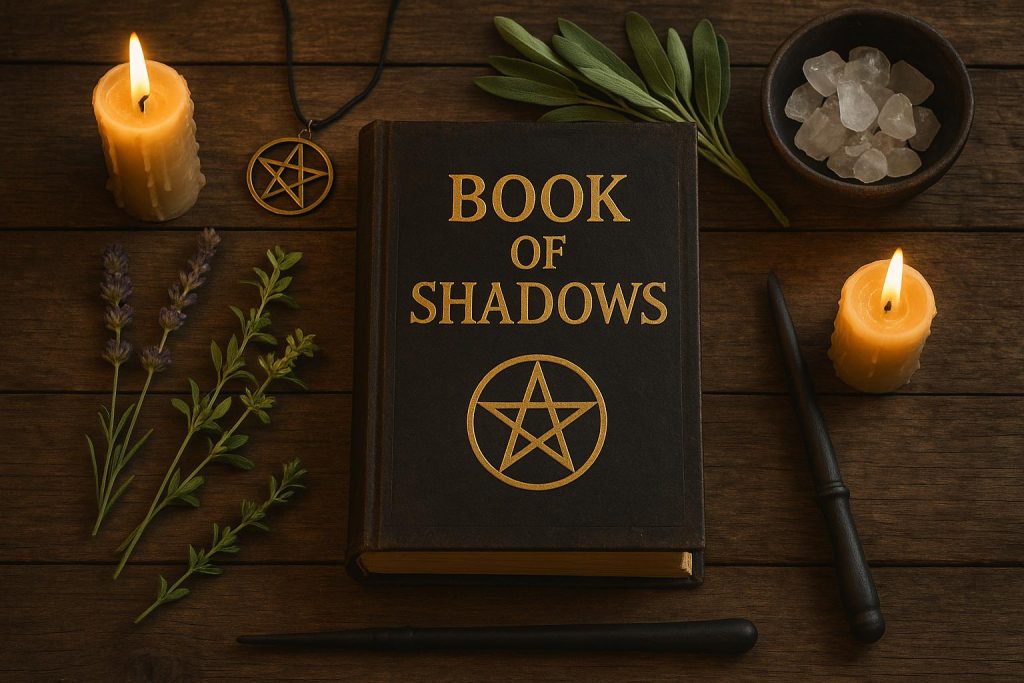
The Book of Shadows in Wicca
The Book of Shadows is a pivotal element in Wicca, serving as both a personal repository and a guide for practitioners. It holds a unique position as a collection of knowledge and practices, often tailored by each Wiccan to suit their individual path and practice. This sacred text is a testament to the craft and continuity of Wiccan practices over time, acting as a living document that preserves both historical and contemporary insights.
History and Origins
The term “Book of Shadows” is believed to have been coined by Gerald Gardner, one of the founders of contemporary Wicca in the mid-20th century. Gardner’s Book of Shadows incorporated rituals, invocations, magical principles, and instructions for coven operations, many of which have been adapted or expanded by practitioners over time. Although Gardner is credited with its introduction, the concept of a grimoire, or a book of magical knowledge, has existed for centuries across various mystical and occult traditions. It is essential to note that while the name may have been newly coined, the idea of recording magical practices is an ancient tradition. Grimoires, dating back to centuries past, served as manuals for ceremonial magic and have been uncovered in various cultures worldwide. These historical roots lend a sense of continuity and deep-rooted tradition to the modern Book of Shadows.
Contents and Structure
A typical Book of Shadows can include a wide array of materials, mirroring the diverse nature of Wiccan practices. While rituals and ceremonies form the backbone of the Book of Shadows, it is not uncommon for practitioners to include spells and incantations, which are often developed or adapted to suit individual needs and intentions. Alongside these, one might find herbal remedies and correspondences, emphasizing the significance of nature in Wiccan practices. These elements often draw from traditional herbalism and may also incorporate personal discoveries and experiences with plants and their energies.
Furthermore, Wiccans often compile astrological data within their Book of Shadows, recognizing the influence of celestial forces on personal and communal endeavors. Understanding the phases of the moon, alignments of planets, and other astrological events allows practitioners to time their rituals and spells for optimal effect. Additionally, ethical guidelines feature prominently, guiding practitioners in maintaining harmony with natural and spiritual laws. These guidelines aid in navigating moral dilemmas and ensuring that magical workings align with the broader Wiccan principle of harming none.
While preservation of these elements is crucial, the structure of a Book of Shadows is not rigid. Each Wiccan is encouraged to personalize their book, reflecting their own journey and growth in the practice. Personal reflections and experiences are integral to this process, allowing practitioners to document insights, challenges, and achievements over time.
Individual and Coven Use
Each practitioner may have their own Book of Shadows, which acts as a personal guide and record of their spiritual journey. It is a source of comfort, reflection, and inspiration, often revisited in times of need or during important milestones. Having a personal Book of Shadows ensures that the traditions and practices are continually relevant to the individual’s spiritual path.
However, within covens, there may also be a collective Book of Shadows that includes shared rituals and knowledge. This communal book serves as a central resource for the group, fostering unity and consistency during coven ceremonies. In a coven, the Book of Shadows is a collaborative effort, reflecting the diverse contributions and shared vision of its members. It becomes a tool for teaching and guiding new members, ensuring that traditional practices are passed down through generations.
Digital Versus Physical Formats
Traditionally, Books of Shadows were handwritten, allowing the act of writing to become part of the ritualistic process. The tactile experience of writing by hand imbues the book with personal energy and intention. In the modern era, however, many Wiccans have opted for digital versions, which offer ease of editing and the convenience of storage. Digital Books of Shadows can be enhanced with multimedia elements, including images, audio recordings, and links, enriching the practitioner’s resources. These digital formats make it easier to organize and update information, catering to the dynamic nature of the document.
Whether digital or physical, the value lies in the personal and spiritual insights contained within the book. Practitioners may choose a format that best suits their lifestyle and spiritual inclinations, acknowledging the evolution of tradition in conjunction with technological advancements. Yet, regardless of the chosen format, the essence of the Book of Shadows remains unchanged—it is a sacred repository of wisdom and experience.
The Book of Shadows remains a living document, continually evolving as practitioners accumulate more knowledge and experience. Its role in Wicca is not only that of a sacred text but also as a testimony to the practitioner’s path, holding both personal and collective wisdom amassed through practice and reflection. As Wiccans navigate their spiritual journeys, the Book of Shadows serves as a steadfast companion, offering guidance and insight at every turn. For more in-depth exploration of Wicca and its traditions, resources and communities are available online to guide new practitioners on their spiritual journey.
In the continuum of Wiccan tradition, the Book of Shadows stands out as an innovative yet deeply rooted tool, bridging the gap between ancient practices and modern adaptations. It embodies the Wiccan ethos of personal responsibility and continual learning, encouraging practitioners to chart their paths with intention and reverence. As such, the Book of Shadows will undoubtedly continue to evolve, reflecting the ever-changing yet timeless nature of the Craft.
